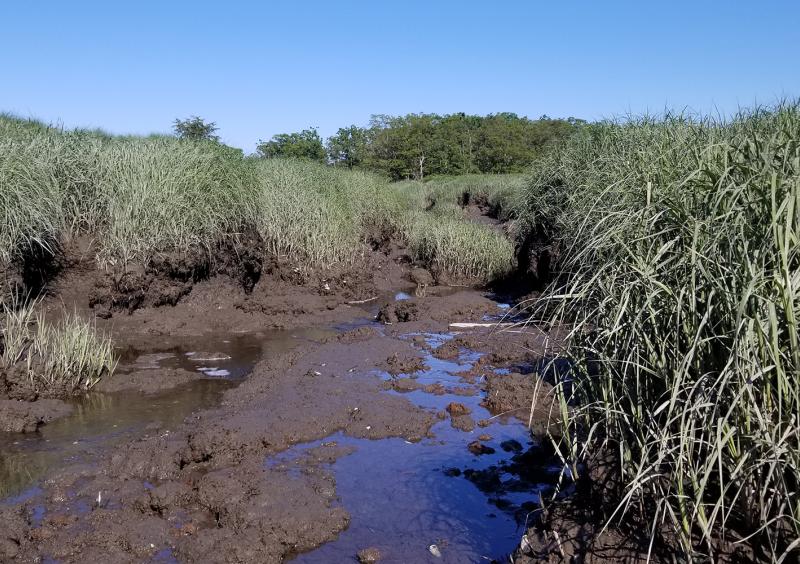Even After Years of Pollution, Salt Marshes Retain Ability to Store Carbon

Coastal ecosystems such as the marshlands of the Plum Island Estuary in Massachusetts sequester and store more carbon per unit area than even the lushest terrestrial jungles or forests.
For 13 years, scientists associated with the Woodwell Climate Research Center (formerly Woods Hole Research Center) and Bryn Mawr College have been studying the effect that increased nitrogen—caused worldwide by large scale agriculture and city and town wastewater—has on salt marshes. Their controlled simulation at Plum Island Sound first introduced excess nitrogen to an experimental area, then removed the nitrogen flow, and tracked plant growth and carbon exchange.
What they found was that nitrogen didn’t cause the expected increase in plant growth and carbon sequestration, but instead provided fuel for microbes to decompose the marsh’s soil. Over time, the additional nitrogen, combined with rising sea levels, caused increased erosion, which made the marshes less effective at sequestering CO2.
“The potential benefit provided in terms of plant growth caused by the nitrogen just isn’t enough to keep pace with the negative effect of increased soil decomposition,” says Thomas Mozdzer, an associate professor of biology at Bryn Mawr College and the lead author on the study, which was recently published in Science of the Total Environment.
Bryn Mawr alumnae Sophie Drew '19 and Paige Weber '18 are among the study's co-authors. In addition to Sophie and Paige, Emily Geoghegan '17, Caitlin Bauer '16, and Frankie Leach have all co-authored papers related to this research with Mozdzer.
In 2017, Mozdzer and his fellow researchers stopped adding nitrogen to the marsh to understand how long the effects of nutrient enrichment lasted. What they found next was surprising—and encouraging: resilience.
“If we stop adding nutrients to coastal wetlands, even with the other factors remaining, there’s a good chance for them to rebound,” says Mozdzer. “Within the first year, the marsh had recovered its ability to store carbon."
While nitrogen pollution is a global problem, the amount of nitrogen making its way into coastal areas is something local governments can directly impact now, says Linda A. Deegan, who worked with Mozdzer on the project.
“We know protecting coastal wetlands from excess nutrient pollution can provide lots of other benefits, from wildlife habitat to slowing incoming storm surges, but this study shows it can also increase their carbon storage,” said Deegan. “By limiting the amount of nitrogen making its way into coastal areas, which is something local governments can directly impact now, towns can get a huge return on investment in terms of ecosystem services.”
This latest research is part of The TIDE Project, a collaboration launched in 2002 and supported by a $1.6 million grant from the National Science Foundation. With this new support, researchers are trying to understand the ability of the marsh to further recover from the harmful effects of nutrients, or if there is a new stability state that the marsh will exist in going forward.
In addition to the previously mentioned students, Bryn Mawr students who have worked on The Tide Project research with Mozdzer include Bridget Reed '19, Camila Silva '19, Sarah King '18, Elena Johnson '16, and Lyntana Brougham '18.